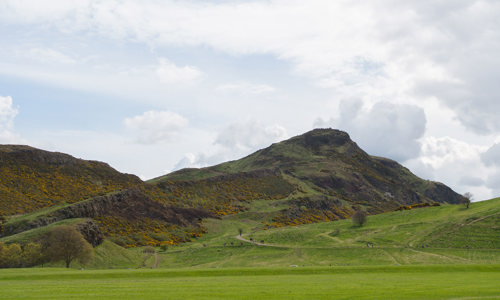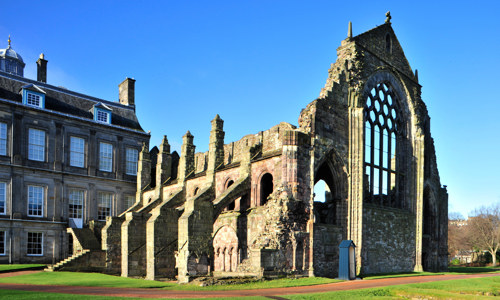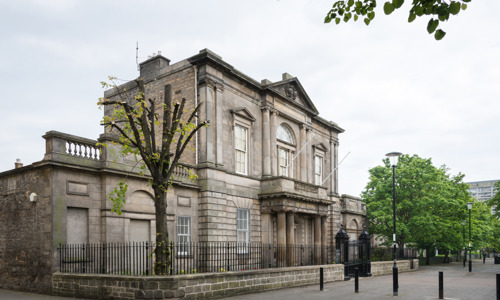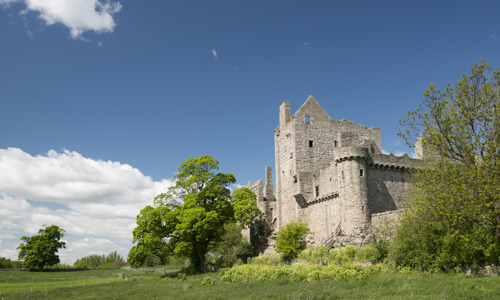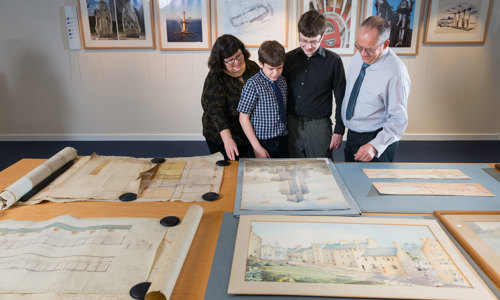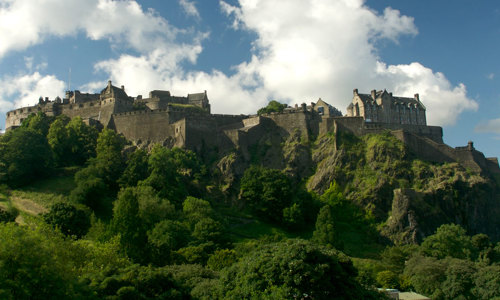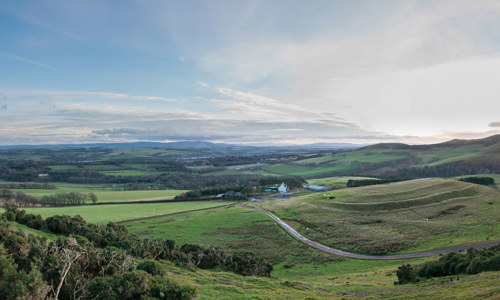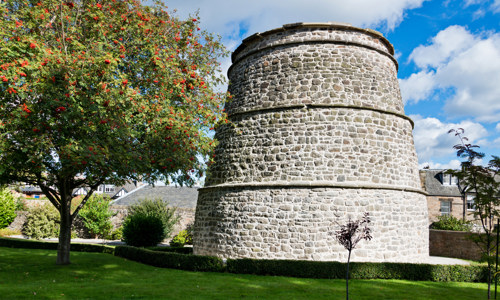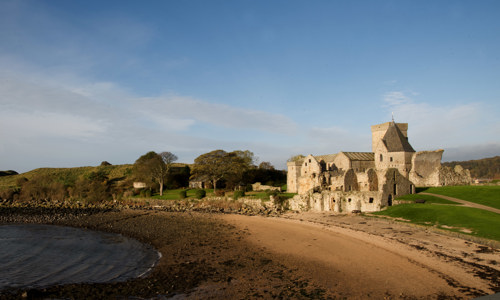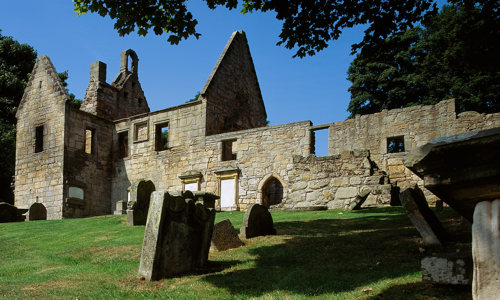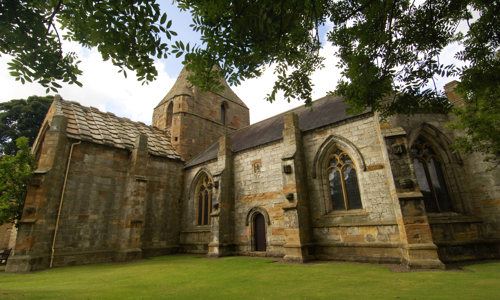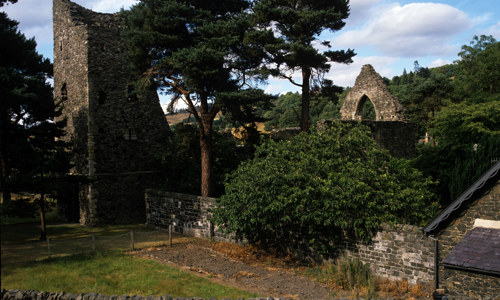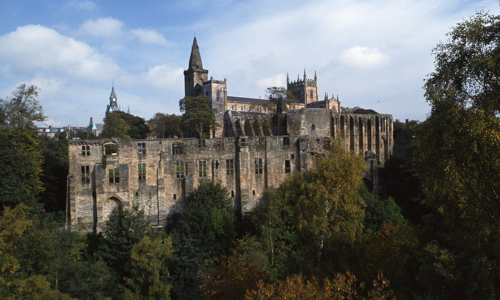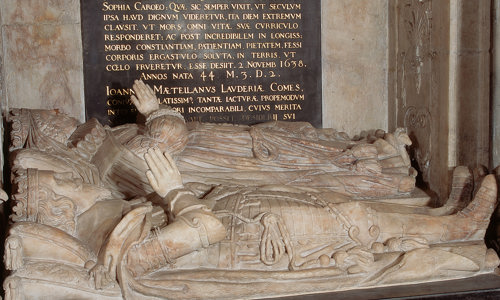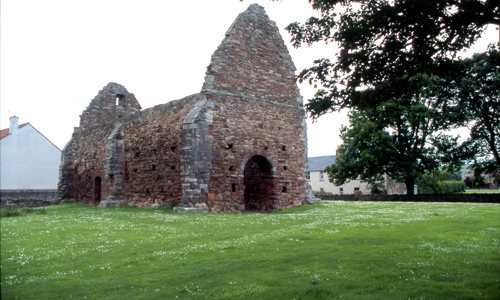History
St Triduana’s was one of the most remarkable buildings in Scotland during the 1400s. The remaining lower storey of the hexagonal chapel remains an impressive and unusual piece of architecture, constructed with considerable skill.
The wellhouse known as St Margaret’s Well in Holyrood Park was originally located near St Triduana’s.
A holy spring
St Triduana’s Chapel is situated in Restalrig, near central Edinburgh. St Triduana, a Pictish saint, is said to have been blinded and martyred in the AD 500s. The holy water from the spring here became associated with cures for eye ailments.
A church has been recorded on the site of St Triduana’s Chapel since the 1100s, and fragments of earlier buildings have been identified.
James III ordered construction of St Triduana’s Aisle in around 1477. It was completed about 10 years later, and the church was given collegiate status as the Deanery of Restalrig.
The chapel’s high status and royal associations might have made it an early victim of the Protestant Reformation of 1560. On 21 December of that year, the General Assembly ordered the destruction and quarrying of the church buildings. Only the lower level of the aisle and some church walls survived.


